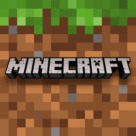Minecraft: The Ultimate Guide to the Block-Building Phenomenon
Minecraft is more than just a video game; it is a global cultural phenomenon that has inspired millions of players worldwide. Known for its blocky graphics, limitless creativity, and immersive gameplay, Minecraft offers players the ability to explore, build, and survive in a vast open world. Since its launch in 2009, the game has grown into one of the best-selling titles of all time, sparking communities, educational programs, and endless content creation. In this article, we will dive deep into everything you need to know about Minecraft, its gameplay, modes, benefits, and why it remains one of the most beloved games in history.
What is Minecraft?
Minecraft is a sandbox video game originally created by Markus “Notch” Persson and later developed by Mojang Studios, which was acquired by Microsoft in 2014. The game allows players to manipulate a world made entirely of blocks. These blocks can represent materials such as dirt, stone, water, and even precious ores. With these simple building units, players can create anything from small houses to gigantic cities, functioning computers, and even entire replicas of real-world landmarks.
The genius of Minecraft lies in its simplicity and freedom. There are no strict rules or objectives unless the player chooses to set them. This open-ended design has helped it appeal to people of all ages, from children just starting their gaming journey to adults who enjoy creativity and exploration.
Gameplay and Modes
Minecraft’s gameplay revolves around exploring, gathering resources, crafting, and building. The game features different modes that provide unique experiences for players:
1. Survival Mode
In this mode, players start with nothing and must gather resources to build shelter, craft tools, and survive against hostile mobs such as zombies, skeletons, and creepers. Managing health and hunger adds an extra challenge, making survival mode one of the most popular ways to play.
2. Creative Mode
For those who love building without restrictions, creative mode is the perfect choice. Players have unlimited access to all blocks and items in the game, allowing them to design massive structures, experiment with redstone contraptions, and unleash their imagination without worrying about hunger or enemies.
3. Adventure Mode
This mode is designed for players who enjoy custom maps and story-driven experiences. While similar to survival mode, adventure mode includes restrictions, such as the inability to break certain blocks unless using the right tools. Map creators often use this mode to develop quests, puzzles, and role-playing scenarios.
4. Hardcore Mode
Hardcore mode takes survival to the next level. With the difficulty locked at the hardest setting, players only have one life. If they die, the world is permanently deleted, making every decision critical.
5. Spectator Mode
Spectator mode allows players to explore the world freely without interacting with it. They can fly through blocks and observe the game from any perspective, which is perfect for watching others play or studying how different parts of the world generate.
The Appeal of Minecraft
One of the reasons Minecraft has maintained its popularity for over a decade is its versatility. Here are some of the aspects that keep players engaged:
Limitless Creativity: The building mechanics allow players to create anything they imagine, from realistic architecture to fantasy worlds.
Community Content: Thousands of mods, skins, and texture packs are available, constantly refreshing the experience.
Multiplayer Fun: Players can join servers, collaborate with friends, or compete in minigames like parkour, survival challenges, and PvP battles.
Educational Value: Minecraft: Education Edition is used in schools worldwide to teach subjects such as math, coding, history, and teamwork.
Regular Updates: Mojang frequently releases updates that introduce new biomes, creatures, and mechanics, ensuring that the game never feels outdated.
Minecraft Biomes and Exploration
The world of Minecraft is divided into biomes, each with unique landscapes, resources, and challenges. Players can explore lush forests, vast deserts, snowy tundras, mysterious swamps, and dangerous nether dimensions. Biomes enhance the sense of adventure, as every new area presents different opportunities for building and survival.
Exploring caves and underground mines is another essential part of the game. Players can find valuable ores such as diamond, redstone, and emerald, which are crucial for crafting advanced tools and machinery. For thrill-seekers, the Nether and the End dimensions offer dangerous but rewarding adventures, including the final boss battle against the Ender Dragon.
Minecraft and Redstone: The Power of Engineering
Redstone, often referred to as the “electricity” of Minecraft, allows players to create complex contraptions and machines. With redstone, you can build simple circuits, automatic farms, doors, traps, and even functioning computers within the game. This feature attracts engineering-minded players and has become a gateway to learning coding and logic design.
The Role of Mods and Servers
The Minecraft community is one of the largest and most active in gaming. Mods (modifications) enhance gameplay by adding new features, items, and mechanics. For example, some mods focus on expanding biomes, while others introduce new creatures or futuristic technology.
Servers provide multiplayer environments where players can gather, socialize, and compete. Popular server types include:
Survival Multiplayer (SMP): A cooperative experience where players build communities together.
Mini-Games: Servers offering games like SkyWars, BedWars, and Hunger Games.
Role-Playing Servers: Worlds where players take on specific roles and follow storylines.
Creative Servers: Platforms for showcasing massive builds and collaborating on projects.
Minecraft in Education
One of the unique aspects of Minecraft is its use in education. Minecraft: Education Edition has been integrated into classrooms to make learning interactive and engaging. Teachers use it to explain concepts such as geometry, chemistry, and history. Students can collaborate on projects, build historical monuments, and even simulate real-world problems to find creative solutions.
This educational aspect has given Minecraft a reputation not only as a game but also as a tool for development and learning.
Why Minecraft Remains Timeless
The lasting success of Minecraft can be attributed to its player-driven creativity, constant updates, and strong community support. Unlike games with a defined storyline, Minecraft’s open-ended design ensures it never becomes repetitive. Every world is different, every build unique, and every adventure personal.
In addition, Minecraft’s accessibility across multiple platforms — from PC and consoles to mobile devices and virtual reality — makes it available to nearly everyone. The cross-platform play feature also allows friends to join each other regardless of device, strengthening the sense of connection.
Conclusion
Minecraft is not just a game; it is a platform for creativity, exploration, and community. With its variety of modes, limitless building possibilities, and strong cultural impact, it continues to inspire millions of players around the world. Whether you are a builder, explorer, adventurer, or engineer, Minecraft offers something for everyone.
From children learning teamwork to adults creating intricate worlds, Minecraft has become a universal language of creativity. More than a decade since its release, it shows no signs of slowing down, proving that blocks and imagination are all you need to build a timeless masterpiece.








